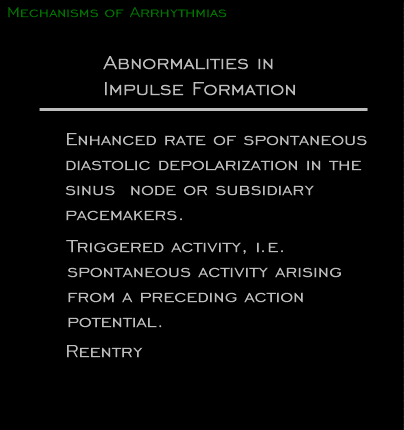
The tachyarrhythmias (a.k.a. the tachycardias), whether physiologic or pathologic, and whether occurring in normal or diseased hearts, can be attributed to abnormalities in impulse formation of which there are three distinct types. These are listed here and include an enhanced rate of diastolic depolarization, triggered activity and reentry.
